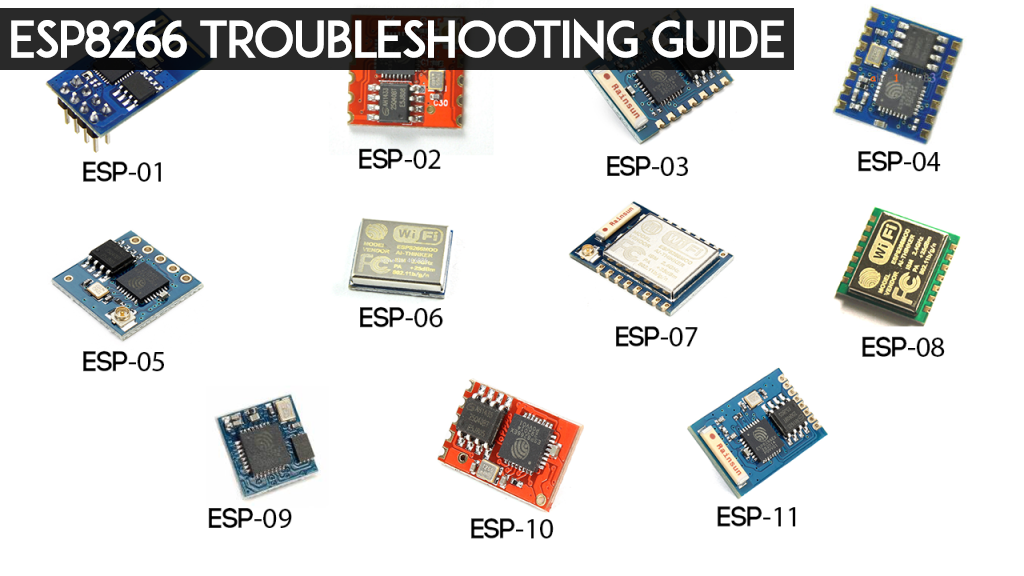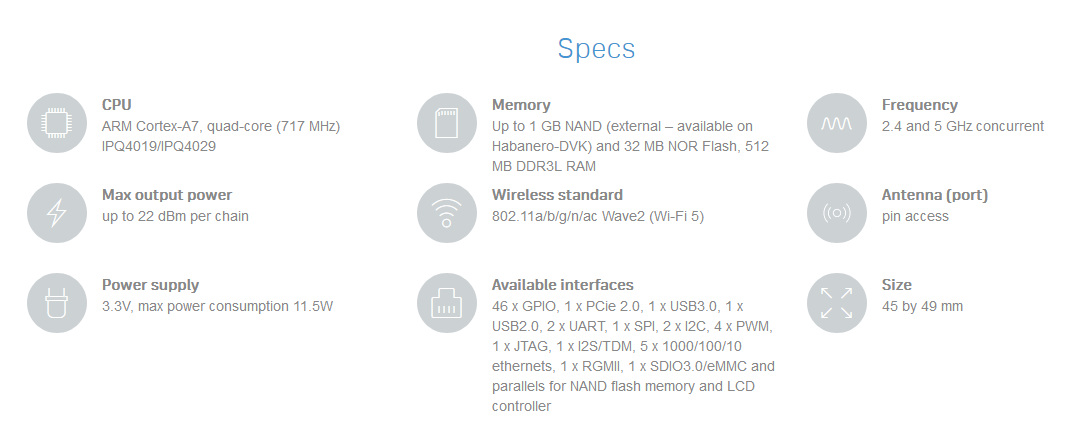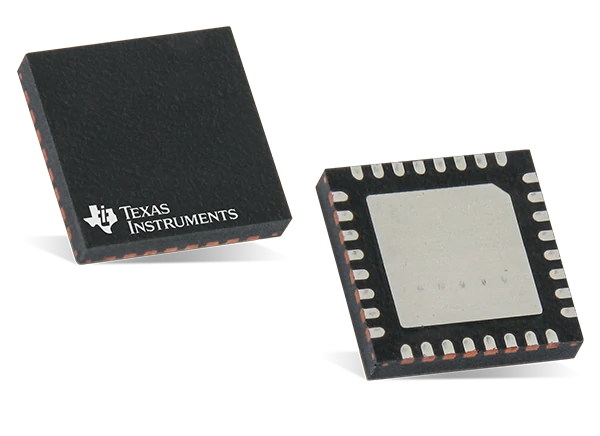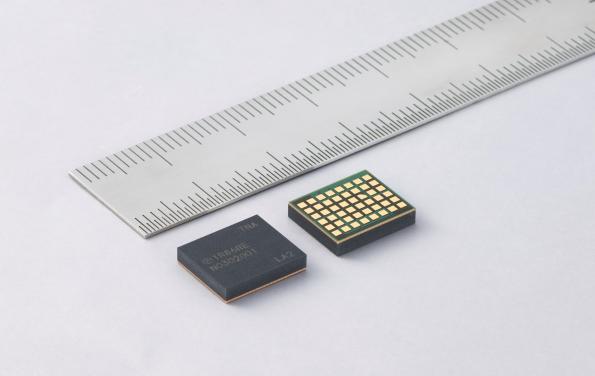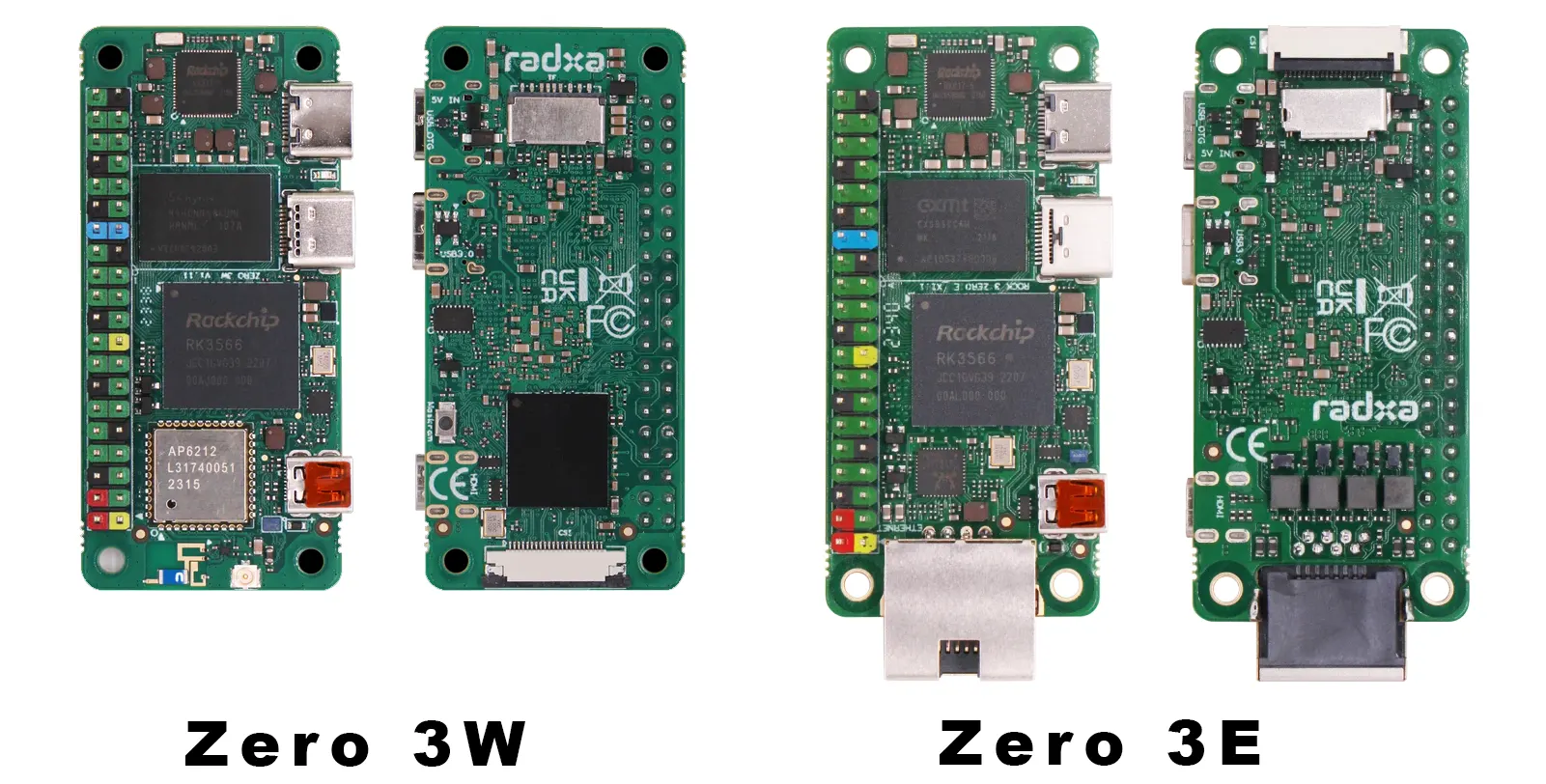
After the success of the Raspberry Pi Zero 2W and Orange Pi Zero 2W, the Radxa Zero 3W & 3E stand out as powerful alternatives with a Rockchip RK3566 processor, up to 8GB RAM, and a 64GB eMMC storage option. Starting at just $15, they can be deemed as the most powerful Arm Linux SBCs in Raspberry Pi Zero 2W form factor.
The CPU, a Rockchip RK3566, clocks at 1.6GHz, and is paired with an Arm Mali G52-2EE graphics processor. This combination supports 4K@60FPS decoding and 1080P encoding. The board also includes an NPU with 0.8 TOPS processing power.
The board is equipped with LPDDR4 memory and offers configurations from 1 GB to 8 GB. Storage options include built-in eMMC 5.1 flash, ranging from 8GB to 64GB, alongside a microSD slot for additional storage.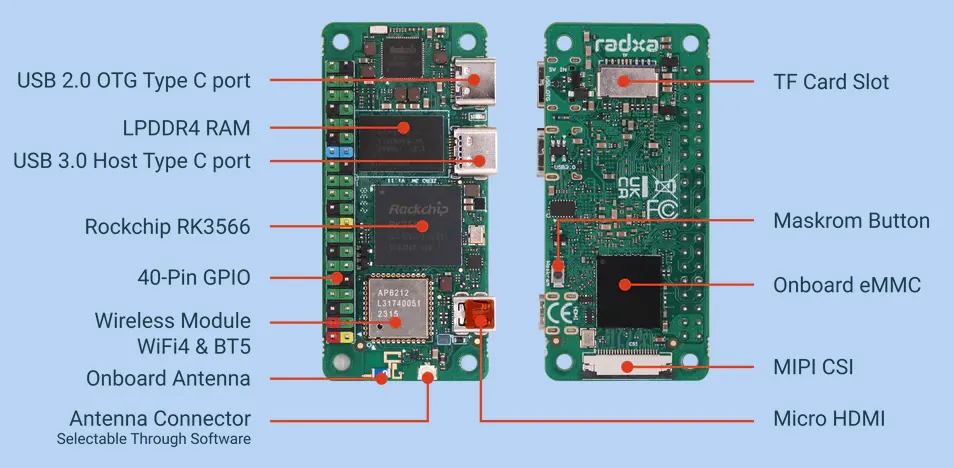
For connectivity, Radxa Zero boards include a micro-HDMI port, a MIPI camera connector, and two USB Type-C ports—one for power and USB 2.0 OTG, and the other for USB 3.0. They also feature Bluetooth 5.0, Wi-Fi 4, and an option for a wired Ethernet connection with PoE support on the 3E model.
When it comes to software and support the Radxa offers Debian and Ubuntu OS images, along with a Linux library for hardware access and control. All the documentation and get started guide are available on their website. You need a 5V/2A power supply and a microSD card to get started. If you are doing a non-headless setup, you will need a micro HDMI to HDMI cable along with a display device and a USB keyboard and mouse (via a USB Type-C dock or hub). Optionally, you might also need a USB to serial debug board a MIPI CSI for debugging, and a camera interface.
Radxa Zero 3W & 3E Board Specifications
- SoC: Rockchip RK3566
- CPU: Quad-core Arm Cortex-A55 @ 1.6 GHz
- GPU: Arm Mali G52-2EE, supports OpenGL ES, Vulkan, OpenCL
- NPU: 0.8 TOPS AI accelerator
- VPU: Supports 4Kp60 and 1080p100f video decoding/encoding
- Memory: 1GB, 2GB, 4GB, 8GB LPDDR4 options
- Storage: Optional 8GB, 16GB, 32GB, 64GB eMMC 5.1; MicroSD slot
- Video Output: Micro HDMI port up to 1080p60
- Camera Interface: MIPI CSI for Raspberry Pi Camera V1.3 and V2
- Wireless: WiFi 4, Bluetooth 5.0; possible WiFi 6 update
- USB Ports: 1 USB 3.0 Type-C (host), 1 USB 2.0 Type-C (OTG)
- Expansion: 40-pin GPIO header
- Other Features: MaskROM button
- Power Supply: 5V/1A via USB-C OTG port
- Dimensions: 65 x 30mm
Later we found out that the Radxa Zero 3E is still in development and yet to be finalized. But it’s drawing attention because of its good price and performance. Many forums suggest that the Zero 2, was never released due to MIPI CSI driver issues, and many other software compatibility issues. Some say the board was primarily built to run Android but it’s now benign developed to run Linux. It’s speculated that the CPU was underclocked from 1.8 GHz to 1.6 GHz, possibly due to cooling challenges on the small PCB.
At the time of writing this article, we don’t have much information about the board, but at $15 for the basic model with 1GB of RAM, it’s a really good deal and could be a strong competitor for similar products. When we checked the base variant of the Radxa Zero 3W is listed on AllNet China starting at $15 and the price goes up to $66 with the 8GB RAM variant.





